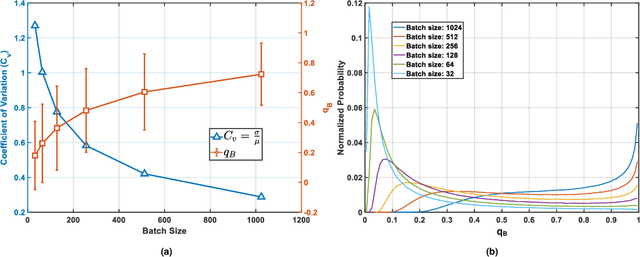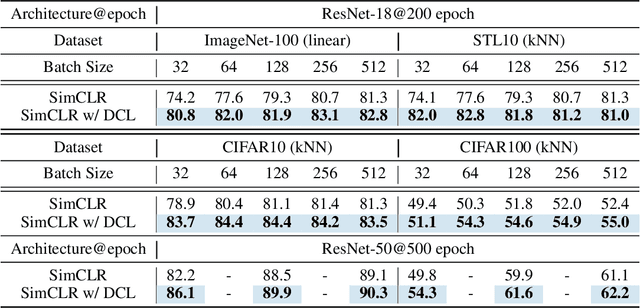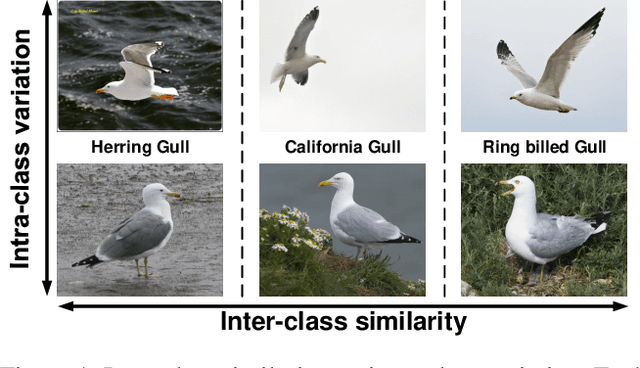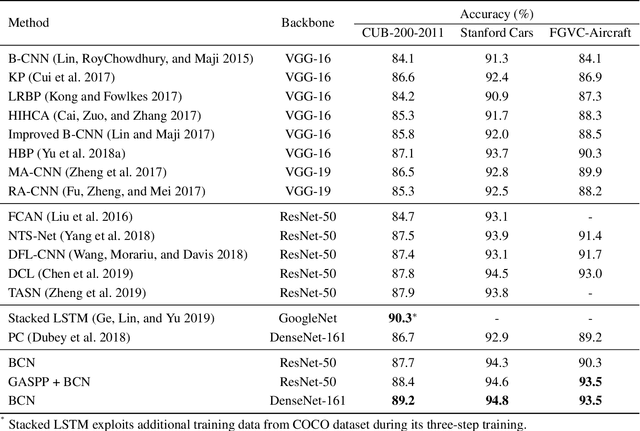Yen-Chi Hsu
Decoupled Contrastive Learning
Oct 23, 2021



Abstract:Contrastive learning (CL) is one of the most successful paradigms for self-supervised learning (SSL). In a principled way, it considers two augmented "views" of the same image as positive to be pulled closer, and all other images negative to be pushed further apart. However, behind the impressive success of CL-based techniques, their formulation often relies on heavy-computation settings, including large sample batches, extensive training epochs, etc. We are thus motivated to tackle these issues and aim at establishing a simple, efficient, and yet competitive baseline of contrastive learning. Specifically, we identify, from theoretical and empirical studies, a noticeable negative-positive-coupling (NPC) effect in the widely used cross-entropy (InfoNCE) loss, leading to unsuitable learning efficiency with respect to the batch size. Indeed the phenomenon tends to be neglected in that optimizing infoNCE loss with a small-size batch is effective in solving easier SSL tasks. By properly addressing the NPC effect, we reach a decoupled contrastive learning (DCL) objective function, significantly improving SSL efficiency. DCL can achieve competitive performance, requiring neither large batches in SimCLR, momentum encoding in MoCo, or large epochs. We demonstrate the usefulness of DCL in various benchmarks, while manifesting its robustness being much less sensitive to suboptimal hyperparameters. Notably, our approach achieves $66.9\%$ ImageNet top-1 accuracy using batch size 256 within 200 epochs pre-training, outperforming its baseline SimCLR by $5.1\%$. With further optimized hyperparameters, DCL can improve the accuracy to $68.2\%$. We believe DCL provides a valuable baseline for future contrastive learning-based SSL studies.
Fine-Grained Visual Recognition with Batch Confusion Norm
Oct 28, 2019



Abstract:We introduce a regularization concept based on the proposed Batch Confusion Norm (BCN) to address Fine-Grained Visual Classification (FGVC). The FGVC problem is notably characterized by its two intriguing properties, significant inter-class similarity and intra-class variations, which cause learning an effective FGVC classifier a challenging task. Inspired by the use of pairwise confusion energy as a regularization mechanism, we develop the BCN technique to improve the FGVC learning by imposing class prediction confusion on each training batch, and consequently alleviate the possible overfitting due to exploring image feature of fine details. In addition, our method is implemented with an attention gated CNN model, boosted by the incorporation of Atrous Spatial Pyramid Pooling (ASPP) to extract discriminative features and proper attentions. To demonstrate the usefulness of our method, we report state-of-the-art results on several benchmark FGVC datasets, along with comprehensive ablation comparisons.
 Add to Chrome
Add to Chrome Add to Firefox
Add to Firefox Add to Edge
Add to Edge